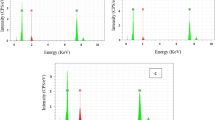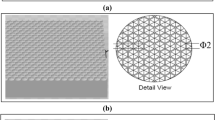The effect of the electrolyte composition for hard anodizing of aluminum on the corrosion resistance of the synthesized anodic coatings was studied. The hard anodizing was carried out at temperatures of –4–0°C for 60 min at a current density of 5 A/ dm2 . The basic electrolyte was a 20% aqueous solution of H2SO4 . Hydrogen peroxide (H2O2) was added to the electrolyte in concentrations of 30; 50; 70 and 100 g/L to determine strong oxidants influence on the characteristics of the anode layers. The concentration of 70 g/L H2O2 in the electrolyte, which ensures the synthesis of the thickest and least porous coating, was optimal. At the initial moment of immersion of anodic coatings synthesized in hydrogen peroxide electrolyte, their corrosion resistance decreases. When peroxide electrolyte concentration increases from 30 to 100 g/L, corrosion currents increase by 30 and 90%, respectively. However, with increasing exposure of coatings in the environment, their corrosion current density decreases more intensively with a decrease in their porosity. After 14 days, no dependence of the coatings corrosion durability on the composition of the electrolyte observed, what indicated a complete closure of the pores.




Similar content being viewed by others
References
E. A. Jr. Starke, and J. T. Staley, “Application of modern aluminum alloys to air-craft,” Prog. Aerosp. Sci., 32, Iss. 2–3, 131–172 (1996); https://doi.org/10.1016/0376-0421(95)00004-6
J. R. Davis, Corrosion of Aluminum and Aluminum Alloys, Oh: ASM Int., Metals Park (1999).
P. G. Sheasby, and R. Pinner, The Surface Treatment and Finishing of Aluminum and its Alloys, Oh: ASM Int., Metals Park (2001).
S. Mezlini, Ph. Kapsa, C. Henon, and J. Guillemenet, “Abrasion of aluminium alloy: effect of subsurface hardness and scratch interaction simulation,” Wear, 257, Iss. 9–10, 892–900 (2004); https://doi.org/https://doi.org/10.1016/j.wear.2004.05.004
H. V. Pokhmurska, M. M. Student, H. H. Veselivska, V. M. Gvozdetskii, and V. M. Yuskiv, “Corrosion-electrochemical behavior of 7075 aluminum alloy laser-modified with SiC carbides in neutral aqueous solutions,” Mater. Sci., 56, No. 5, 622–628 (2021); https://doi.org/https://doi.org/10.1007/s11003-021-00473-x
Y. M. Kuskov, V. A. Zhdanov, I. O. Ryabtsev, M. M. Student, and H. H. Veselivska, “Methods for increasing the corrosion resistance of coatings deposited under a flux layer from high-chromium powder wires,” Mater. Sci., 55, No. 5, 710–715 (2020); https://doi.org/https://doi.org/10.1007/s11003-020-00362-9
I. Ivasenko, V. Posuvailo, H. Veselivska, and V. Vynar, “Porosity segmentation and analysis of oxide ceramic coatings of D16T alloy,” Int. Sci. and Techn. Conf. on Computer Sci. and Inform. Techn., 2, art. no. 9321900 (2020); https://doi.org/10.1109/CSIT49958.2020.9321900
A. I. Berg, and I. M. Giliver, Anti-corrosion Protection of Metal Using Spray Metallization Method [in Russian], TsBNTN, Moscow (1973).
M. M. Student, H. V. Pokhmurs’ka, K. R. Zadorozhna, H. H. Veselivs’ka, V. M. Hvozdets’kyi, and Y. Y. Sirak, “Corrosion resistance of VC–FeCr and VC–FeCrCo coatings obtained by supersonic gas-flame spraying,” Mater. Sci., 54, No. 4, 535–541 (2019); https://doi.org/10.1007/s11003-019-00214-1
A. Sharma, and N. Suri, “Surface treatment of aluminium by anodizing: a short review,” Inter. Res. J. of Eng. and Techn., 4, Is. 6, 186–190 (2017).
M. M. Student, I. M. Pohrelyuk, V. M. Hvozdetskyi, H. H. Veselivs’ka, K. R. Zadorozhna, R. S. Mardarevych, and Y. V. Dzioba, “Influence of the composition of electrolyte for hard anodizing of aluminum on the characteristics of oxide layer,” Mater. Sci., 57, No. 2, 240–247 (2021); https://doi.org/10.1007/s11003-021-00538-x
V. F. Henley, Anodic Oxidation of Aluminum and its Alloys, Pergamon Press (1982).
G. E. Thompson, “Porous anodic alumina: fabrication, characterization and application,” Thin Solid Films, 297, Is. 1–2, 192–201 (1997); https://doi.org/https://doi.org/10.1016/S0040-6090(96)09440-0
A. J. M. Torrescano, Hard Anodic Films for Aluminium Alloys, The University of Manchester, Manchester (2018).
M. Aggerbeck, S. Canulescu, K. Dirscherl, V. E. Johansen, S. Engberg, J. Schou, and R. Ambat, “Appearance of anodised aluminium: Effect of alloy composition and prior surface finish,” Surface and Coatings Technology, 254, 28–41 (2014); https://doi.org/https://doi.org/10.1016/j.surfcoat.2014.05.047
M. Bara, M. Niedźwiedź, and W. Skoneczny, “Influence of anodizing parameters on surface morphology and surface-free energy of Al2O3 layers produced on EN AW-5251 alloy,” Materials, 12, Is. 5, art. no. 695 (2019); https://doi.org/10.3390/ma12050695
A. G. Atanasyants, Anodic Behavior of Metals [in Russian], Metallurgiya, Moscow (1981).
S.-H. Kang, W.-B. Tu, J.-X. Han, Z. Li, and Y.-L. Cheng, “A significant improvement of the wear resistance of Ti6Al4V alloy by a combined method of magnetron sputtering and plasma electrolytic oxidation (PEO),” Surf. & Coat. Techn., 358, 879–890 (2019); https://doi.org/https://doi.org/10.1016/j.surfcoat.2018.12.025
J. A. Curran, and T. W. Clyne, “Thermo-physical properties of plasma electrolytic oxide coatings on aluminium,” Surf. and Coat. Techn., 199, Spec. Iss. 2–3, 168–176 (2005); https://doi.org/10.1016/j.surfcoat.2004.09.037
V. M. Samertsev, “Anionic activation of aluminum during anodic dissolution in halide-containing media,” Zashchita Metallov [in Russian], 28, No. 5, 760–767.
Author information
Authors and Affiliations
Corresponding author
Additional information
Translated from Fizyko-Khimichna Mekhanika Materialiv, Vol. 59, No. 2, pp. 103–108, March–April, 2023
Rights and permissions
Springer Nature or its licensor (e.g. a society or other partner) holds exclusive rights to this article under a publishing agreement with the author(s) or other rightsholder(s); author self-archiving of the accepted manuscript version of this article is solely governed by the terms of such publishing agreement and applicable law.
About this article
Cite this article
Veselivska, H.H., Hvozdetskyi, V.M., Student, M.M. et al. The Influence of the Electrolyte Composition for Hard Anodizing of Aluminum on Corrosion Resistance of Synthesized Coatings. Mater Sci 59, 228–233 (2023). https://doi.org/10.1007/s11003-024-00767-w
Received:
Published:
Issue Date:
DOI: https://doi.org/10.1007/s11003-024-00767-w




